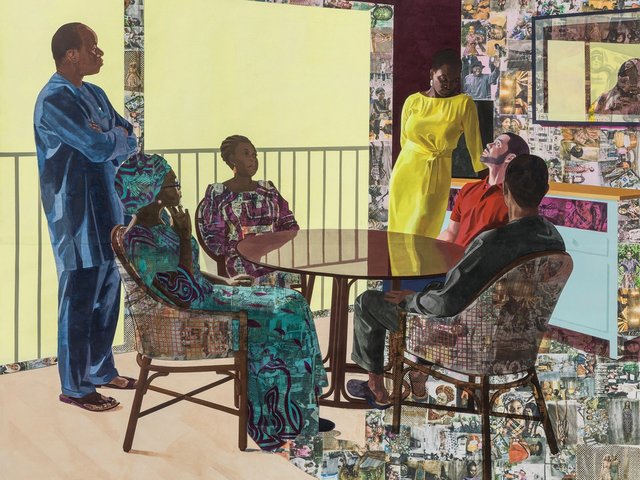Philadelphia
When works by African-American artists are shown together because of their shared “identity”, questions can arise about the value of presenting artists by such a criterion, as distinct from subjects, styles or periods. The curators of “Represent: 200 Years of African-American Art” at the Philadelphia Museum of Art do not shy away from this debate.
The consulting curator Gwendolyn DuBois Shaw points out that to engage in the debate around post-identity culture, one could argue that works of art by African Americans may be tied to history or independent of it, but doing so requires that we view such work in the light of the artistic creations and experiences of the past several generations.
This exhibition, which marks the publication of a catalogue of the museum’s African-American holdings, unites 75 works (around 10% of the collection) under four historical sections from the early 19th century to the present. Starting with the pre-Civil War period, the earliest work on show is Moses Williams’s 1802 silhouette of the American painter Charles Willson Peale.
Two significant works by Horace Pippin, a self-taught artist who lived in Europe and served in an all-black regiment in the First World War, epitomise “Modernism”, a section devised by John Vick, the show’s curator, to display works by artists using avant-garde styles with a sense of social responsibility. In Mr Prejudice, 1943, Pippin “depicts segregation and discrimination in the First World War”, Vick says. Also in this section is Henry Tanner’s The Annunciation, 1898, which was shown in the 1898 Paris Salon and became the first work by an African-American artist to enter a major US museum, the Philadelphia Museum of Art.
Works made after the civil rights movement comprise the remaining two sections of the show. “We first look at artists whose work is abstract but also pushes the boundaries of traditional materials,” Vick says. Among them are Barbara Chase-Riboud, Alma Thomas and Martin Puryear.
The final room focuses on well known contemporary artists such as Carrie Mae Weems, Lorna Simpson, Glenn Ligon and Kara Walker, “whose works tend to directly address the legacy of race relations and the representation of race”, Vick says.
Sponsors of the exhibition include the Pew Charitable Trusts, the Center for American Art at the Philadelphia Museum of Art, PECO and the Kathleen and John Sherrerd Fund for Exhibitions.
• Represent: 200 Years of African-American Art, Philadelphia Museum of Art, 10 January-5 April
Originally appeared in The Art Newspaper as 'From Civil War to civil rights'




